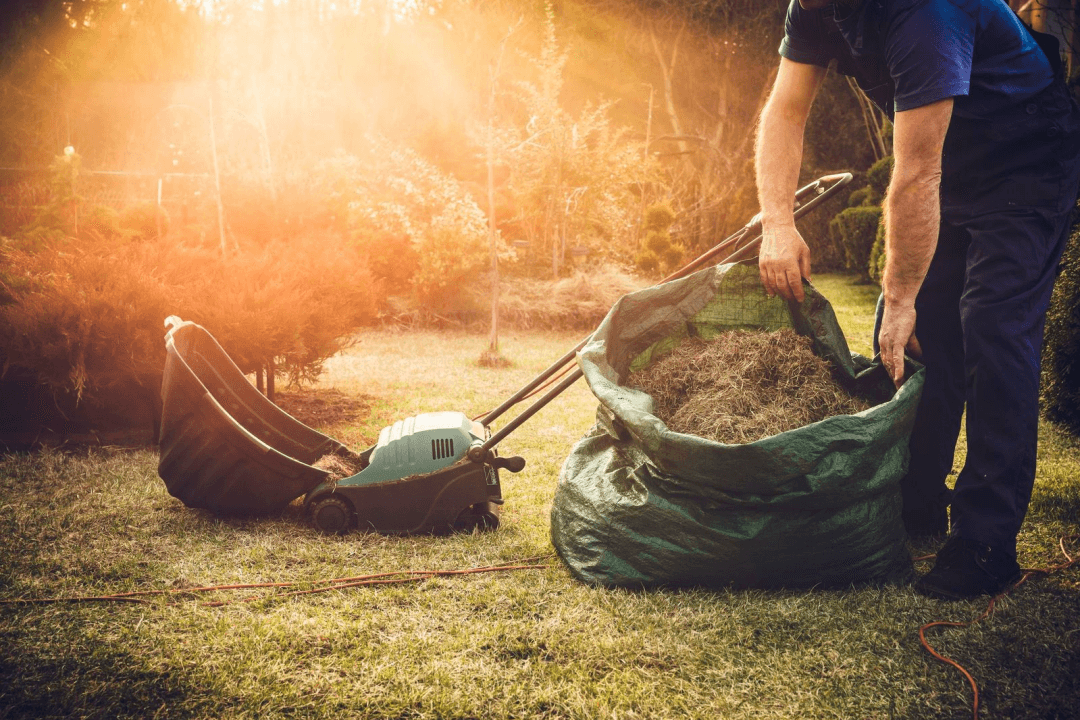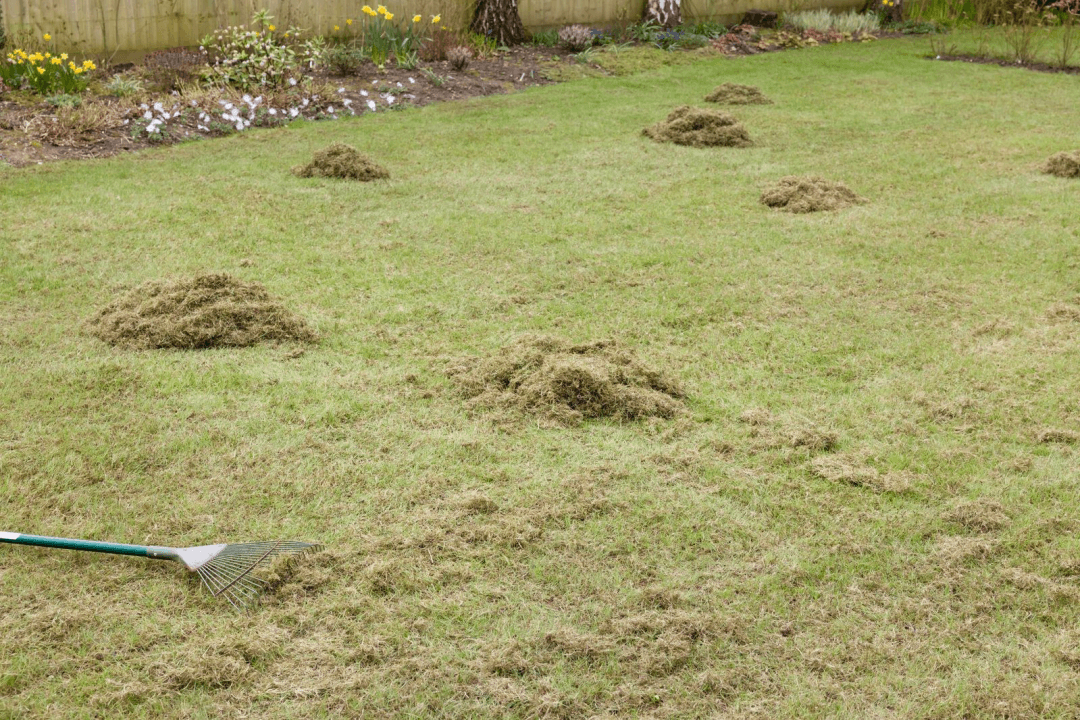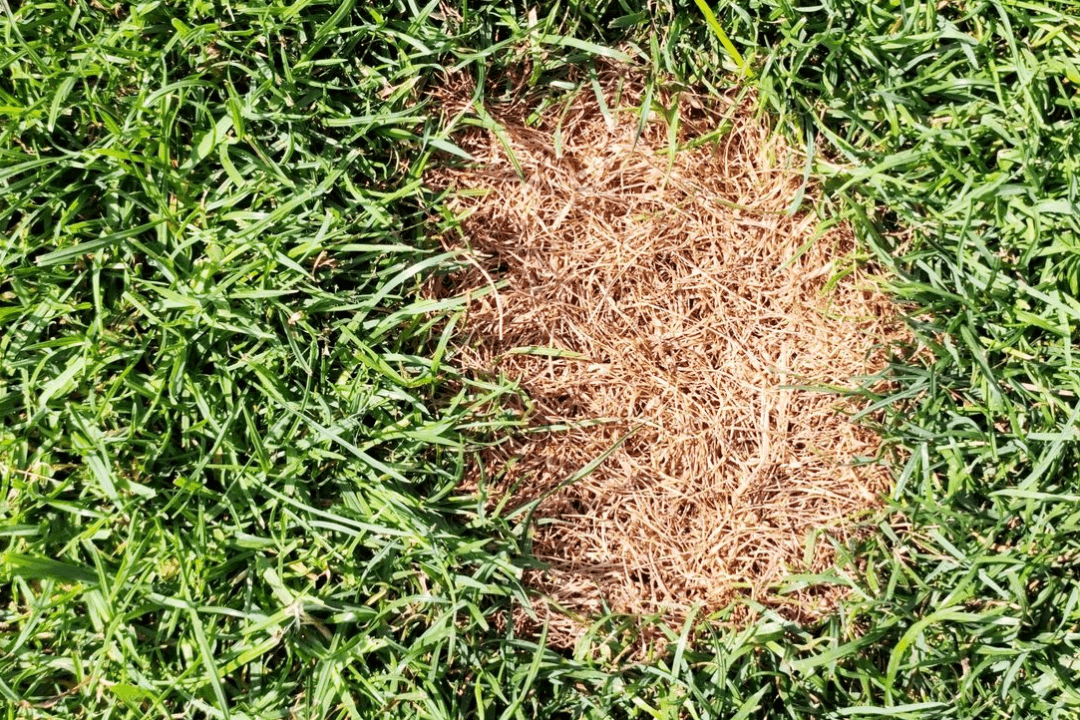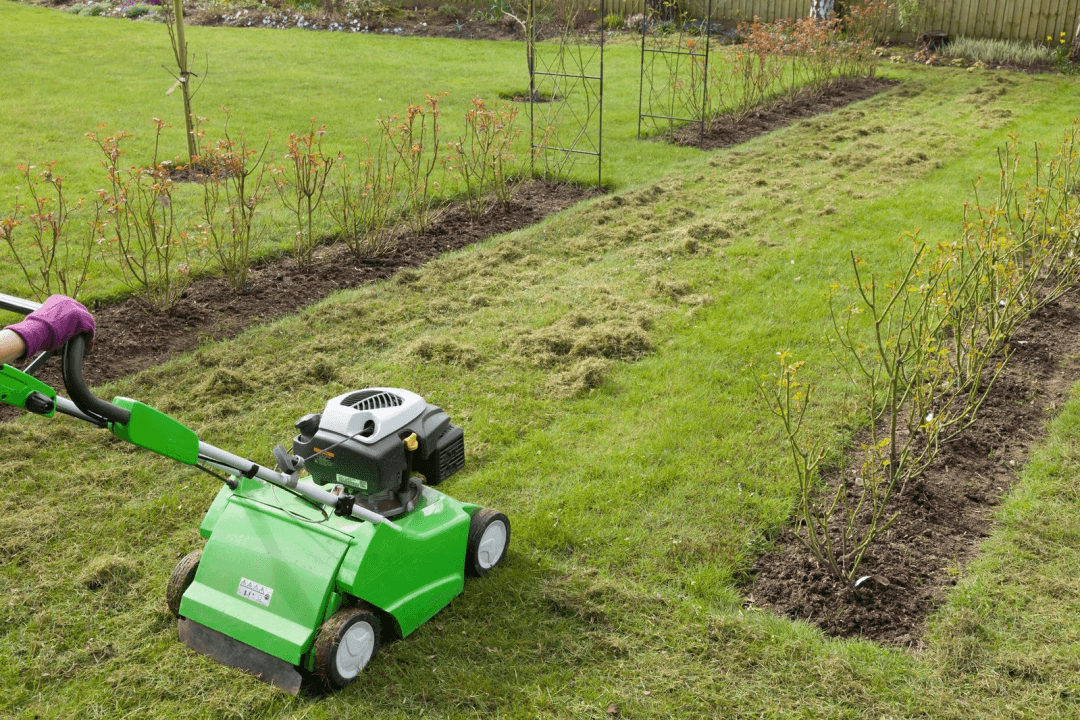Dethatching a Lawn: When Do You Need to Do It?
Dethatching a Lawn: When Do You Need to Do It?
Maintaining a lush and green lawn requires more than just regular watering and fertilizing. It also involves removing thatch, a layer of dead grass, leaves, and roots that accumulates on the soil’s surface over time. In this blog post, we’ll discuss what thatch is, how it affects your lawn, what dethatching a lawn is, when you need to dethatch your lawn, and how to do it effectively.

What is dethatching a lawn?
What is Thatch?
Thatch is a layer of dead grass and organic material accumulating on your lawn over time. While a certain amount of thatch is beneficial, growth can be hindered when thatch builds up to anything over 1/2 inch thick. It can also be a breeding ground for pests and diseases. If your lawn has too much thatch, it’s crucial to dethatch. Lawn dethatching helps you to avoid ugly brown patches, bare spots, and, in worst cases, lawn death.
How Does Thatch Form?
Thatch formation is a natural process that occurs as grasses grow and expand. Lawn thatch develops as the lower stems and roots of the grass plants die. They accumulate, intermingle, decompose, and, over time, form a thick layer. Factors like grass species, soil type, lawn mower height, watering frequency, and fertilization practices can affect the rate of thatch buildup of an entire lawn. For example, watering your lawn too often or using excessive nitrogen fertilizers can encourage rapid growth and excessive thatch buildup.

Early spring or summer can help keep grass healthy.
Benefits of Dethatching
Choosing to dethatch a lawn can be important in maintaining a healthy lawn. When you remove thatch, you create more roots space and improve water and nutrient absorption. By improving soil moisture and soil compaction while conducting general thatch maintenance, small lawns and large ones alike can greatly benefit.
Signs You Need to Dethatch
Observing your lawn regularly can help in determining whether it requires dethatching or not. Thick thatch layers can cause your lawn to appear dull and lifeless, so keep your eye out for patches of brown spots. This is because thatch blocks air, water, and nutrients from reaching the roots of the grass, limiting their growth. Ironically thatch buildup happens more quickly in healthy lawns cultivated with fertilizers and in areas with minimal foot traffic, so be sure not to neglect those areas.
Another way to identify whether your lawn needs dethatching is to check for signs of pests and diseases. This is because even the thinner thatch layers provide a safe place for pests and cause fungal diseases to thrive. Finally, if you feel your lawn is not responding to fertilization or watering, then dethatching could help to solve the problem.

Dead spots in a lawn can be an indication it’s time to dethatch your lawn.
What is Dethatching a Lawn and When to Do it?
Dethatching should be done when the thatch thickness increases beyond half an inch. It is essential to time the process right so grass recovers well. Cooler seasons, like early fall or spring, are ideal for dethatching as they coincide with the growing seasons for grass. This facilitates quick recovery with little damage. However, if your lawn needs aggressive dethatching, it is best to wait until spring when the grass is coming out of dormancy. Also note that in warmer climates with warm-season grasses, you may need to dethatch more frequently or during different times of the year than you would for cool-season lawns.
How to Dethatch Your Lawn?
Before dethatching, make sure your lawn is healthy, well-watered, and mowed short. Dethatching requires special equipment, so it’s best to hire lawn care professionals with expertise and tools to do it efficiently. Using a power rake or renting dethatchers from your local garden center is an option if you want to do it yourself.
If you do choose to do it yourself, here are the steps to dethatch your lawn:
- Mow your lawn shorter than usual before dethatching to make it easier to see and reach the thatch layer.
- Use a dethatching rake or a dethatching machine to remove the thatch layer. A power rake is more labor-intensive but gentler on your grass, while a machine is faster but can cause damage to grass if you’re not careful.
- Collect grass clippings and thatch debris and dispose of them properly by composting or hauling them away.
- Water the lawn immediately and thoroughly after dethatching to help it recover and stimulate new growth.
- Fertilize the lawn with a balanced formula to give it the nutrients it needs to recover and thrive.
Preventing Thatch Buildup
Preventing a thick thatch layer buildup is easier and less costly than treating it later. Some ways to prevent thatch buildup include regular mowing, proper watering practices, and minimal fertilizer use. Mowing regularly at the recommended height (1/3 of the grass blades) can help prevent the accumulation of long stems and plant material that contributes to thatch.
Similarly, proper watering practices (deep and infrequent watering) can encourage deeper root growth and minimize the buildup of organic material near the soil surface. Lastly, consider aerating your lawn periodically. Aeration can help loosen the compacted soil and grass roots and allow air, water, and nutrients to penetrate, reducing the risk of thatch buildup.

Using vertical mowers or power rakes can help create a healthier lawn.
Summary
Dethatching your lawn is an essential part of lawn care that ensures healthy growth and a beautiful appearance. By knowing when to dethatch and how to do it properly, you can avoid damaging your grass and create a thriving environment for your lawn. If you’re a business owner, property manager, or homeowner in the Minneapolis metropolitan area, consider hiring a professional lawn care service to remove excess thatch.
Contact All Metro Service Companies to learn more about lawn care services and how we can help you achieve the best results for your property.
Looking for more information?
Call us today at 763-789-4788 to receive a free estimate on any of our property services.
Free Estimates
on all Services
Use the form below to request a free estimate on any of our services.






